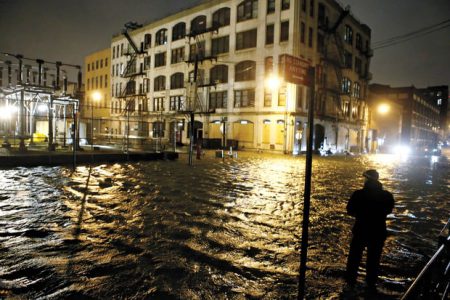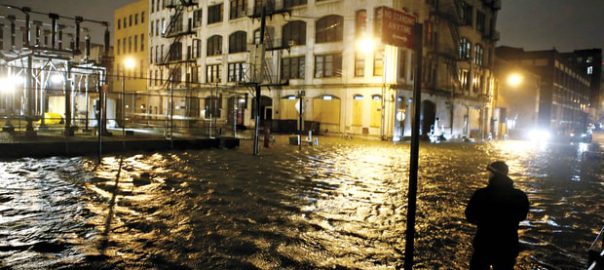The future of America’s greatest city is at risk

It’s a bright spring day in New York, with sunlight dancing on the East River and robins singing Broadway tunes. I’m walking along the sea wall on the Lower East Side of Manhattan with Daniel Zarrilli, 41, the head of New York’s Office of Resilience and Recovery – basically Mayor Bill de Blasio’s point man for preparing the city for the coming decades of storms and sea-level rise. Zarrilli is dressed in his usual City Hall attire: white shirt and tie, polished black shoes. He has short-cropped gray hair, dark eyes and an edgy I’ve-got-a-job-to-do manner.
Zarrilli may be the only person in the world who holds in his head the full catastrophe of what rising seas and increasingly violent storms mean to the greatest city in America. Not surprisingly, instead of musing about the beautiful weather, he points to the East River, where the water is innocently bouncing off the sea wall about six feet below us.
“During Sandy,” he says, darkly, “the storm surge was about nine feet above high tide. You and I would be standing in about four feet of water right now.”
As Zarrilli knows better than anyone, Hurricane Sandy, which hit New York in October 2012, flooding more than 88,000 buildings in the city and killing 44 people, was a transformative event. It did not just reveal how vulnerable New York is to a powerful storm, but it also gave a preview of what the city faces over the next century, when sea levels are projected to rise five, six, seven feet or more, causing Sandy-like flooding (or much worse) to occur with increasing frequency.
“The problem for New York is, climate science is getting better and better, and storm intensity and sea-level-rise projections are getting more and more alarming,”
says Chris Ward, the former executive director of the Port Authority of New York and New Jersey, the agency in charge of airports, tunnels and other transportation infrastructure.
“It fundamentally calls into question New York’s existence. The water is coming, and the long-term implications are gigantic.”
Read more: Rolling Stone
